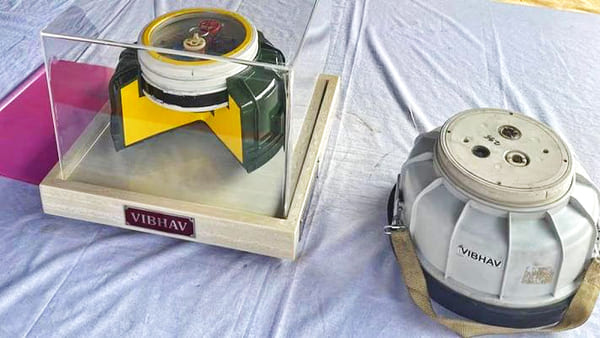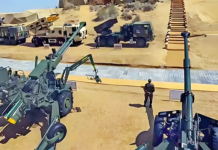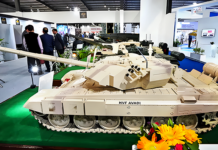‘Pralay’ Ballistic Missiles Cleared
The defence ministry has approved the purchase of a regiment of ‘Pralay’ ballistic missiles for the Indian Army. These missiles will be deployed along the borders with China and Pakistan and will have a range of 150-500 km. The ‘Pralay’ missile is a quasi-ballistic surface-to-surface missile that can change its path midair and defeat interceptor missiles. It has the ability to change its path after covering a certain range in midair.
The Army would be deploying these missiles with conventional warheads and using them in tactical roles. The missile was successfully tested twice on consecutive days in 2022 on December 21 and December 22.
‘Pralay’ is powered by a solid propellant rocket motor and other new technologies. The missile guidance system includes state-of-the-art navigation and integrated avionics.
Extended Range BrahMos Cruise Missile
The BrahMos Missile Regiment of the Indian Army has test-fired a land-attack version of extended range BrahMos supersonic cruise missile (BrahMos ER) from the Andaman and Nicobar Islands on 10 October as part of the induction trials. The missile has not yet been inducted, and the Indian Army will consider inducting it based on the outcomes of the test.
Also Read: Defence ministry finalising deal for 200 ER BrahMos cruise missiles for Navy
According to Janes data, BrahMos ER is an improved variant of its basic configuration. The missile’s configuration and overall dimension remain unchanged from the baseline version but the ER missile likely features an active radar seeker. The missile is powered by a liquid propellant ramjet motor.
Janes estimates the range of the extended variant to be around 72% (between 450 and 500 km) more than the baseline version range of 290 km.
‘Vibhav’ Anti-tank Mines
In a significant development for India’s defence capabilities, the Indian Army has recently inducted 600 self-neutralizing anti-tank mines known as “Vibhav.” These mines, designed and manufactured indigenously in collaboration with the Defense Research and Development Organisation (DRDO), offer enhanced mobility kill capabilities against enemy armoured vehicles.
The collaboration between the Indian Army and DRDO has resulted in the creation of ‘Vibhav’ as a point-attack anti-tank munition. This homegrown solution underscores India’s commitment to developing its defence capabilities independently.
The ‘Vibhav’ anti-tank mine is crafted from state-of-the-art plastic, providing it with the necessary strength and durability to withstand the rigours of storage, handling, and deployment in diverse field conditions. This innovative munition represents a notable advancement in India’s defence technology.


These anti-tank mines are specifically designed to deliver mobility kill effects against all types of enemy armoured vehicles. Whether laid mechanically or manually, ‘Vibhav’ mines offer a formidable defence against armoured threats.
An electronic anti-handling and anti-lift device (EAHALD) is integrated into ‘Vibhav.’ Once armed, this device remains active for 120 days, further enhancing the mines’ effectiveness and safety. Compared to earlier mines, ‘Vibhav’ incorporates mechanical timers, enabling self-neutralization after 120 days. This feature significantly enhances safety and minimizes the risk of unintended consequences. The ‘Vibhav’ mines incorporate multiple safety and actuation mechanisms, ensuring safe handling for operators. Simultaneously, their lethal capabilities make them a reliable choice for countering current and future armoured vehicles.
The production of ‘Vibhav’ mines is underway by the Kalyani Group for the Indian Army. These munitions offer a storage life of 10 years without requiring any special storage conditions, ensuring their readiness for deployment when needed. ‘Vibhav’ anti-tank mines represent a remarkable achievement in India’s pursuit of advanced defence technology. With their cutting-edge features, these indigenous munitions enhance the Indian Army’s capability to counter armoured threats effectively.
India’s arsenal of Anti-tank mines is not limited the Vibhavs. It comprises a range of anti-tank mines designed for different operational scenarios. The T-72 mine, a well-established option, has been widely used and is manually deployed to effectively target armored vehicles. The NUH anti-tank mine, a more recent addition developed by DRDO, incorporates advanced technologies for enhanced lethality.
The M-16 anti-tank mine is designed for blast penetration with a considerable kill radius. The Bharat 60 anti-tank mine, known for its versatility, can be laid manually or mechanically and offers effectiveness against various armored threats. Lastly, the Tarmet anti-tank mine is specifically designed to counter infantry and armored vehicle threats. These mines contribute to India’s robust anti-tank capabilities, catering to diverse operational requirements and enhancing its defense capabilities against armored adversaries.
Communications Boost
In a major move to provide secure satellite-based communications to troops out on long-range patrols along the Line of Actual Control with China as well as Special Forces deployed for “surgical operations”, the Army is now fast acquiring different types of advanced hand-held and lightweight suitcase-based Satcom sets.
ALSO READ: DEFENCE REVIEW 2023 – IAF Operations and Exercises
The Army, on 18 September, inked a deal for over 160 “cutting-edge mobile secure satellite terminals (MSSTs)” with defence PSU Bharat Electronics (BEL), which is the latest in the series of such contracts sealed in recent months, defence ministry sources told TOI.
The contracts inked earlier include ones for over 150 man-portable Ku-band satellite terminals, around 400 S-band hand-held terminals, over 300 S-band manpack terminals and over 80 light vehicle-based Ku-band satellite communication terminals, among others.
These secure portable terminals, by DRDO and BEL, will be a significant force-multiplier as they offer unparalleled resilient military communication support to troops deployed in remote far-flung areas.
They will also augment communications for Para-Special Forces while being employed for rapid small-team surgical operations. It’s an important step towards leveraging capabilities of Indian SATCOM technologies and advances in the space domain for Army formations deployed in forward and harsh terrain conditions.
The older Satcom sets with the Army have become obsolete over the years, with troops on long-range patrols along the 3,488-km LAC often not able to effectively communicate with their operating bases and the military hierarchy.
The defence ministry in March last year had also given the nod for the Rs 4,600 crore project for a GSAT-7B satellite for the Army, after earlier approving the Rs 2,236 crore project for the GSAT-7C satellite for the IAF in November 2021. The advanced GSAT-7B satellite should be operational by 2025-26.
‘Robotic Buddy’ for Battlefield Missions
The Indian Army has unveiled a robotic system capable of serving a wide variety of battlefield needs. Called the “Robotic Buddy,” the cutting-edge system was developed by army engineers at the Military College of Electronics and Mechanical Engineering and unveiled during the Artificial Intelligence for Military Applications seminar in southern India, in early October.
It can reportedly detect humans, track specific areas, measure distances, and transmit intelligence, surveillance, and target acquisition data to aid an attack.
The tech features a robotic arm and a platform equipped with two cameras each to give an advantageous view of the surroundings.
Operated remotely from a ground control station, the Robotic Buddy’s arm can lift up to 15 kilograms (33 pounds), allowing it to retrieve unexploded shells and save soldiers the dangerous task of collecting them manually.
‘Project Udbhav’ – Rediscovery of Indian Statecraft, Diplomacy And War-Fighting
The Indian Army, in collaboration with the United Service Institution of India (USI), a defence think tank, has launched ‘Project Udbhav’.
This initiative aims to rediscover the ancient Indian texts on statecraft, warcraft, diplomacy, and grand strategy, in order to understand the profound Indic heritage in these areas.
The project endeavours to explore India’s rich historical narratives in the realms of statecraft and strategic thoughts. It focuses on a broad spectrum including indigenous military systems, historical texts, regional texts and kingdoms, thematic studies, and intricate Kautilya studies.
Project Udbhav aims to bridge the historical and contemporary aspects of these disciplines.
The goal is to understand the profound depths of indigenous military systems, their evolution, strategies that have been passed down through the ages, and the strategic thought processes that have governed the land for millennia.
The goal of Project Udbhav is not only to rediscover these narratives but also to develop an indigenous strategic vocabulary that is deeply rooted in India’s multifaceted philosophical and cultural tapestry.
The aim is to integrate ancient wisdom with modern military pedagogy, according to the statement.
Since 2021, a study has been conducted to compile Indian stratagems based on ancient texts.
By reintroducing these classical teachings into contemporary military and strategic domains, the army aims to nurture its officers to apply ancient wisdom in modern scenarios. This approach also allows for a deeper understanding of international relations and foreign cultures.

















